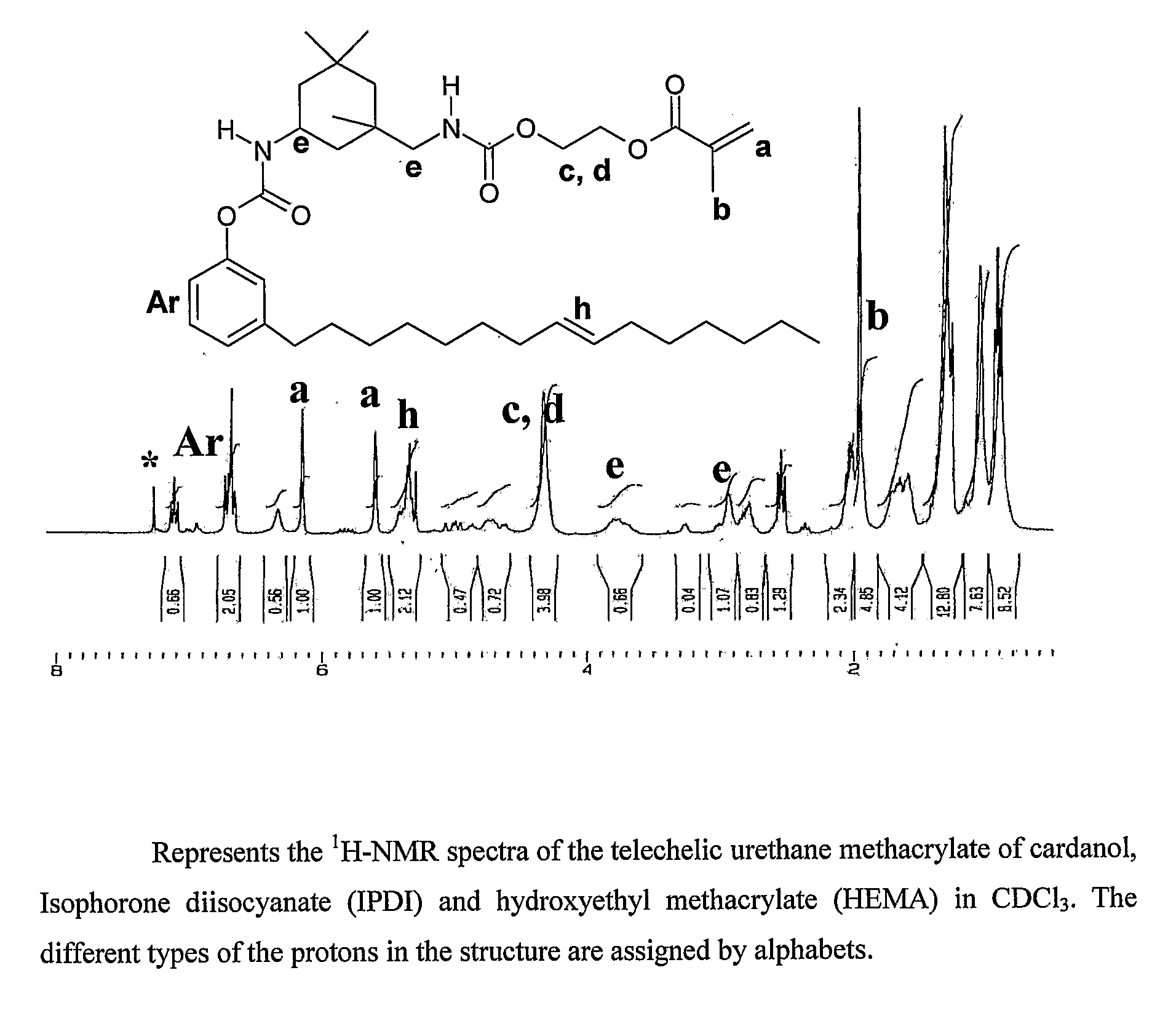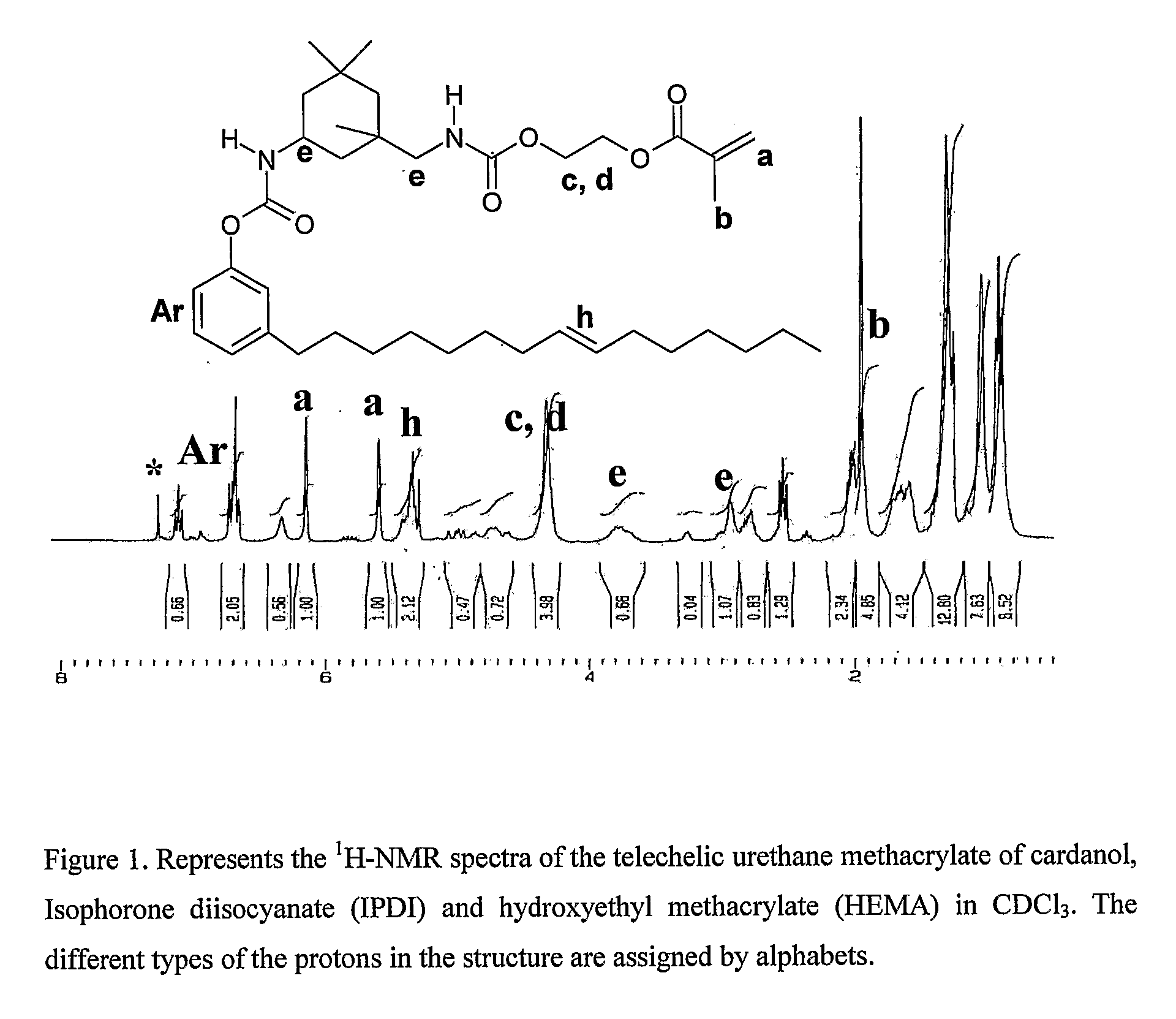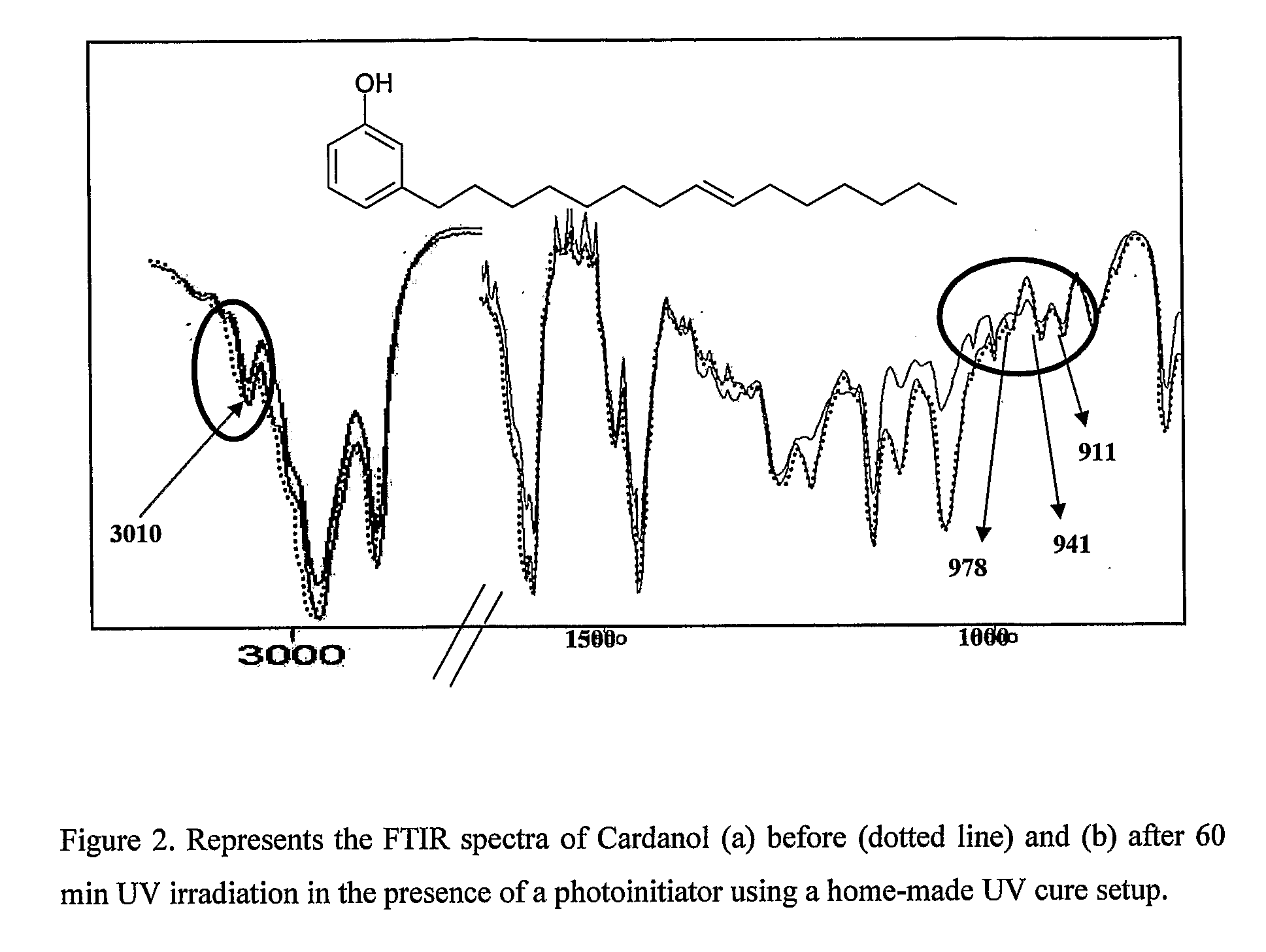Process for synthesis of telechelic urethane acrylate UV curable pre-polymeric materials
a technology of telechelic urethane acrylate and polymer materials, which is applied in the direction of polyurea/polyurethane coatings, printing, thermography, etc., can solve the problems of not many reports on urethanes synthesized directly from cardanol, defects in bond lines and resin matrix, and gel formation. to achieve the effect of improving the curing ra
- Summary
- Abstract
- Description
- Claims
- Application Information
AI Technical Summary
Benefits of technology
Problems solved by technology
Method used
Image
Examples
example 1
Synthesis of Cardanol-IPDI-HEMA
[0031]Isophorone diisocyanate [IPDI] (0.73 g, 0.003 moles) in 10 ml dry DMF was taken in a 100 ml two necked flask. 2-Hydroxy ethyl methacrylate [HEMA][0.43 g, 0.003 moles] was added drop wise with constant stirring under nitrogen. The reaction mixture was allowed to proceed under room temperature for 1 and a half hours. Then 3 drops of dibutyl tin dilaurate [DBTDL] was added as catalyst followed by drop wise addition of cardanol (1 g, 0.0033 moles) in 10 ml DMF. It was left stirring at room temperature for further 2 hours. It was then heated to 55° C. and maintained at that temperature for 2 hours. Then, the contents were poured to 150 ml water and extracted with dichloromethane. It was then washed with plenty of water and dried in vacuum oven at 60° C. for 12 hours. Yield=90% (1.95 g)
example 2
Synthesis of Cardanol-IPDI-HEMA by Alternate Method
[0032]Isophorone diisocyanate [IPDI] (0.73 g, 0.003 moles) in 10 ml dry DMF was taken in a 100 ml two necked flask. Cardanol (1 g, 0.0033 moles) in 10 ml DMF was added drop wise with constant stirring under nitrogen. The reaction mixture was allowed to proceed under room temperature for 1 and a half hours. Then 3 drops of dibutyl tin dilaurate [DBTDL] was added as catalyst followed by drop wise addition of 2-Hydroxy ethyl methacrylate [HEMA][0.43 g, 0.003 moles]. It was left stirring at room temperature for further 2 hours. It was then heated to 55° C. and maintained at that temperature for 2 hours. Then, the contents were poured to 150 ml water and extracted with dichloromethane. It was then washed with plenty of water and dried in vacuum oven at 60° C. for 12 hours. Yield=90% (1.95 g)
example 3
Synthesis of Modified Cardanol-HMDI-HEMA
[0033]Cardanol was modified by coupling it with 2-chloroethanol in presence of K2CO3 and KI in DMF under inert atmosphere. Hexamethylene diisocyanate [HMDI] (0.49 g, 0.003 moles) in 10 ml dry DMF was taken in a 100 ml two necked flask and the contents were cooled with ice. HEMA (0.38 g, 0.003 moles) was added drop wise with constant stirring under nitrogen. The reaction was allowed to proceed under ice cold condition for 2 hr. Then the reaction was kept at room temperature for 1 hr. After that the reaction was changed to ice cold condition and 3 drops of DBTDL was added as catalyst followed by drop wise addition of modified cardanol (1 g, 0.003 moles) in 10 ml DMF. It was left stirring under cold condition for a further 1 hr and allowed to attain room temperature. Then the reaction was heated to 50° C. for 12 hrs. The contents were poured to 150 ml water and extracted with dichloromethane. It was then washed with plenty of water and dried in v...
PUM
| Property | Measurement | Unit |
|---|---|---|
| Temperature | aaaaa | aaaaa |
| Fraction | aaaaa | aaaaa |
| Nanoscale particle size | aaaaa | aaaaa |
Abstract
Description
Claims
Application Information
 Login to View More
Login to View More - R&D
- Intellectual Property
- Life Sciences
- Materials
- Tech Scout
- Unparalleled Data Quality
- Higher Quality Content
- 60% Fewer Hallucinations
Browse by: Latest US Patents, China's latest patents, Technical Efficacy Thesaurus, Application Domain, Technology Topic, Popular Technical Reports.
© 2025 PatSnap. All rights reserved.Legal|Privacy policy|Modern Slavery Act Transparency Statement|Sitemap|About US| Contact US: help@patsnap.com



